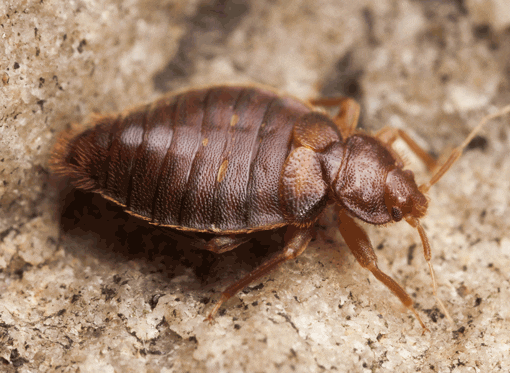The bed bug eggs require six to ten days to hatch. As soon as the bed bug nymphs emerge, they begin their search for a blood meal. From the immature nymph stage to adulthood, the molting process takes place five times. Before a molt, the insects need to feed at least once. Nonetheless, they can feed as frequently as once daily. In a year,there can be over three generations.

The website of the Environmental Protection Agency (EPA) provides various images of bed bugs in over the different life stages. Bed bugs are nocturnal insects. This is an important fact to note if you are hoping to find these insects during the day. You will need both determination and luck if you are to find these insects in the daytime.
Identifying Bed Bugs
A lot of people often make the simple mistake of assuming that a bed bug bite is from a mosquito or any other insect. It is quite common for some individuals not to react to bites from bedbugs. This is one reason why it can take a very long time before the bites are discovered.
Nonetheless, it is possible to identify bed bugs by searching the correct areas. Without any equipment, you can see an adult bed bug. Simply check the following areas:
- Loose paneling or wallpaper
- Headboards
- Wall junctions/ceilings
- Bedside tables
A crevice or crease close to where an individual sleeps is also good hiding spots for bed bugs. This includes any of the following:
- Mattress seams
- Baseboards
- Personal belongings
A mature bed bug can grow to about five millimeters. These bed bugs are flat, wingless, and reddish-brown in color. After feeding on blood, they swell up to a bigger size. This causes a change from a reddish-brown color to a bright red. They retain this color for days before returning to their original color.
There are five stages before adulthood which can be used in the classification of an immature bed bug. With the exception of the bird bugs in the youngest stage, it is possible to see the immature bed bugs with the naked eye. Although they are the hardest to see due to their very small size, eggs serve as another sign of the presence of bedbugs. Appearing in clusters, they are one millimeter long and pearly white in color.
Close to where the host sleeps, bedbugs form aggregations by gathering together. The aggregation consists of the different stages. This results in varying sizes and shapes. Egg castings,feces, and exoskeletons also pile up within. Micro climate factors, specific smells, stimulation of antennae, and chemical stimuli are some of the conditions that result in aggregation. Places, where aggregations can be located, include personal belongings and areas around wood framing such as around baseboards, air conditioners, etc. Read More…



